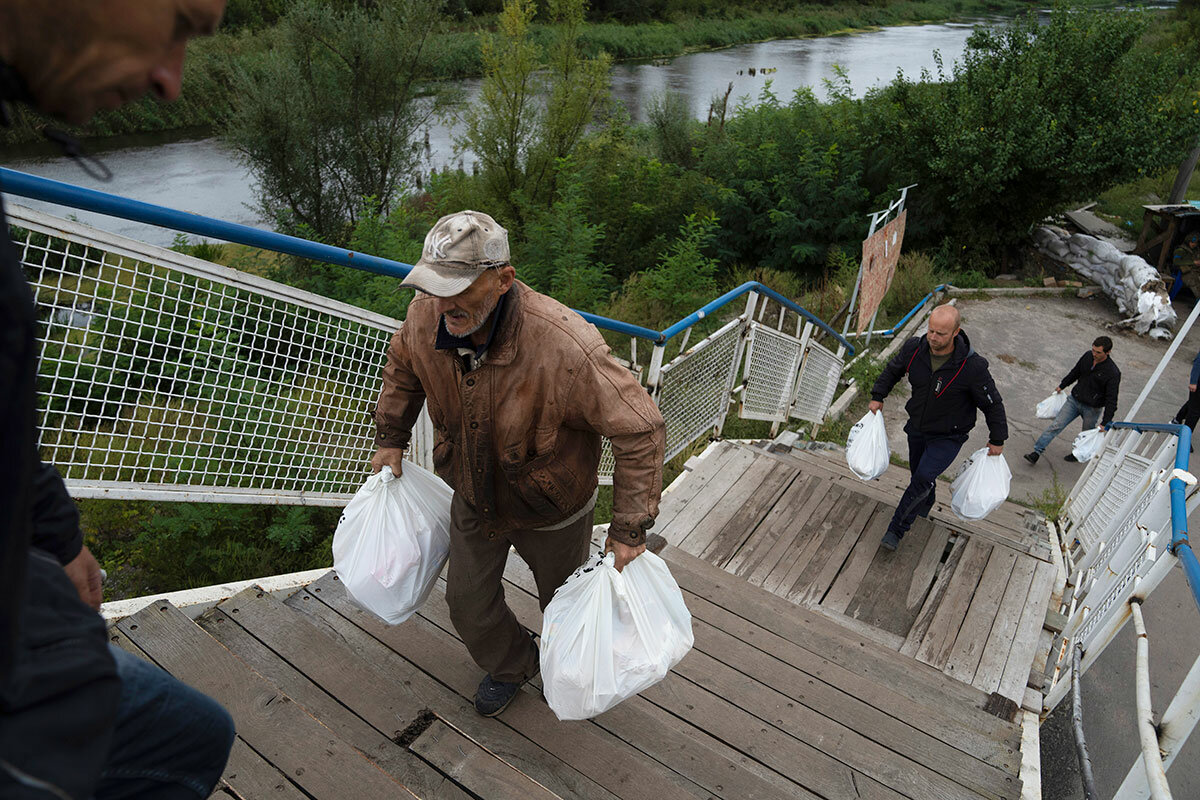In Ukraine – and Europe – who can win the winter?
Loading...
| London
In Ukraine, the battle map has been shifting in Kyiv’s favor. Yet in the critical weeks ahead, it’s the weather map that may turn out to matter more.
In the Kremlin, in war-ravaged Ukraine, and in the allied capitals on which Ukraine is relying for military and financial support, the countdown to winter has begun.
Russian President Vladimir Putin is hoping it will be a long and punishingly cold one. And he’s giving every indication that he is determined to maximize day-to-day suffering – and economic damage – by denying heat and electricity to Ukraine and its allies in Europe.
Why We Wrote This
A story focused onThe future of the war in Ukraine will be decided only partly on the battlefield. Just as important will be European citizens’ readiness to stick with Kyiv even if power cuts mean they are freezing cold this winter.
The twin aims are to break the morale of Ukrainians and to weaken European public support for Kyiv by raising the price of such solidarity.
The question is whether it will work. His invasion six month ago, intended to subdue and swallow up Ukraine within days, proved an epic misjudgment.
Has he miscalculated again?
The answer will lie with the Ukrainians and their allies. And for months now, they too have had their eyes on the winter ahead.
That has already been evident in Ukraine’s dramatic offensive against Russia’s occupation forces in the east of the country. As long ago as mid-July, a top aide to Ukrainian President Volodymyr Zelenskyy was stressing the need to make major advances before winter, when the Russians would be able to “dig in” and better resist attacks to dislodge them.
That helps explain the urgency with which Ukraine has moved – retaking some 1,500 square miles of its territory in the northeast – and its push to make further gains before winter sets in.
How successful they are will hinge only partly on the Russian army’s readiness to fight; more important is whether Ukraine’s allies are ready to provide more and more powerful weaponry.
But the Kremlin will be just as worried by another aspect of Europe’s winter planning – the continent’s intensive efforts to cushion the effects of the energy crisis that Mr. Putin is counting on to undermine support for Mr. Zelenskyy.
For months, European Union states have been urgently restocking badly depleted stores of natural gas. This week, the president of the EU’s executive commission, Ursula von der Leyen, announced that their storage facilities were now nearly 85% full.
She also announced an unprecedented plan for a $140 billion windfall tax on gas, oil, and coal producers to help pay for government subsidies that will limit European households’ gas bills. Britain, despite having left the EU, is also finalizing a package, which could total nearly $200 billion, to cap energy price increases for households and businesses.
A number of EU states, including Germany, have also been taking steps to cut energy use and drawing up plans for more drastic cutbacks if necessary.
So far, the main effect of Russia’s sharp cutback on natural gas supplies to the EU – it provided some 40% of the bloc’s imports before the war, but less than a quarter of that today – has been to harden Europe’s political resolve and accelerate moves to find long-term alternatives.
Inevitably, the Russian cutbacks have inflicted damage on European economies, if only because they’ve contributed to a steep worldwide hike in energy prices. But EU countries have set themselves the goal of eventually importing no Russian gas at all, and they have been adapting more quickly than the Kremlin will have expected.
Yet, winter could still be grueling.
In Ukraine, more than 6 million people have lost their homes as a result of the invasion. Half a million, mostly in the east of the country, are already living without electricity.
And the Russians’ immediate response to recent Ukrainian success on the battlefield – missile strikes on civilian power plants – leaves little doubt that Mr. Putin is ready to deny Ukrainians power, heat, and light when the winter nights arrive.
In Europe, too, the EU’s preparations may not be sufficient to prevent blackouts if the winter proves especially severe. Even if things do not get that bad, there is every possibility that EU economies will be tipped into recession.
Still, recent polls indicate that grassroots European support for Ukraine is holding up, six months into the war. And Ms. von der Leyen, while frankly acknowledging that the EU “will be tested” in the winter ahead, was keen to remind member states that a deeper principle was at stake: “It is autocracy against democracy.”
Both she and Mr. Putin know, however, that the next stage of that struggle will depend on more than the military experts.
It’s in the hands of the weather forecasters.






